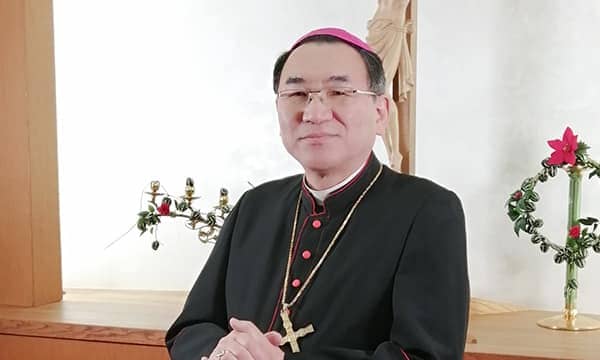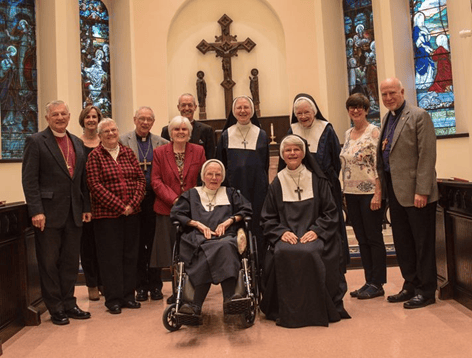ROME – Riling up old Catholic-Jewish tensions seems to be the order of the day, with Steven Spielberg’s upcoming feature film on the highly divisive 19th century Mortara case, featuring a Jewish child forcibly taken from his parents after he was secretly baptized by a servant and brought up in the papal court, being merely the best-known example.
Yet on Tuesday, participants at a Rome event honored a very different chapter in Jewish-Catholic relations — three Italian Catholics during the Second World War who risked their lives to save thousands of Jews from persecution and death.
The commemoration came as Italy is once again engaged in a national round of soul-searching about race, racism and the state of minorities in a country that prides itself for welcome and tolerance, but which also continues to struggle with a shadow side.
Titled “Righteous of Yesterday and the Righteous of Today,” the conference was one of the events marking the International Holocaust Remembrance Day on January 27, which in Italy is commemorated over a span of ten days with shows, conferences and initiatives.
It took place at the ‘House of Memory,’ one of many venues created by former Roman mayor Walter Veltroni during his 2001-2008 term, to remember, preserve and protect the post-war Jewish and partisan legacy of the city.
(In Italian argot, the “partisans,” or partigiani, were people who took part in resistance to fascism, both Mussolini and the German Nazi occupiers of Italy.)
“We must help kids learn to distinguish good from bad!” said Stefano Ridolfi, President of the Progressive Jewish Beth Hillel community in Rome.
Ridolfi said he’s worried by “those who say: ‘Who cares about that 2 percent [Jewish population of Italy]?’ Those people are everywhere,” he said.
“The United States is at our same level,” Ridolfi said. “Protecting minorities from the leading majority is our duty.”
The Institute Yad Vashem in Jerusalem awards the honorary title of “Righteous Among Nations” to non-Jews who saved members of the Jewish community from the Holocaust. They include the Catholic priests and bishop remembered at Tuesday’s event who, in 1943, during the German occupation of Italy, created a wide and efficient national network to protect not only persecuted Italian Jews, but also many hailing from other parts of Europe.
The lawyer and the priest
In 1943 Italy was catapulted into chaos, with Nazis exercising control over the northern part of the country and the Allied forces inching up from the south. Jews living in the north faced the worst persecution during this time, as the genocide perpetrated by the Nazis reached some of its most violent and vicious peaks.
It was in this year that Father Francesco Repetto, Vicar to the Archbishop of occupied Genoa, and Cardinal Pietro Boetto, met with local lawyer Lelio Vittorio Valobra in an encounter that would save hundreds of lives.
Since 1939, Valobra had been the head of DELASEM, an association aimed at helping Jewish refugees relocate to other countries that was sponsored by the American Jewish Joint Distribution Committee, or JDC. With the Nazi occupation, the organization was forced underground and threats to its leader increased to the point that he was forced to leave the country with his family.
It was for this reason that Valobra wanted to meet the vicar. His hope was that the diocese would take over his work, and take care of the many people in his charge. Jewish immigrants were coming in from Yugoslavia, Poland, and even southern France, where Jews preferred to follow the Italian soldiers back to their homeland rather than face the odds with an imminent German invasion.
At the time, helping a member of the Jewish community came at high personal risk, including imprisonment in one of the hundreds of concentration camps in Italy. Huge rewards were paid for anyone who denounced a Jew, including children, and the majority of the country leaned in favor of the fascist regime.
Despite this risk, Repetto put the personnel and venues of the archdiocese at their disposal. The archdiocese agreed to take funds sent from the Americans and distribute them to the Jewish community in need. What they lacked was someone who could navigate the intricate sea of bureaucratic issues that would arise, rapidly react to a crisis, and possess the right connections in the right places.
The Scarlet Pimpernel
The charming and mustachioed aviator Massimo Teglio was just the right man for the job. When his sister was imprisoned and taken to a concentration camp, Teglio promised never to leave Genoa until he knew what happened to her.
The determination to help his Jewish community led him to become an expert forger, capable of creating credible papers that would trick even the expert eyes of the SS. Teglio enthusiastically came onboard, becoming the archdiocese’s liaison with the underground DELASEM.
Jews needed three things to move semi-freely in and out of Italy: A ration book, fake identity cards that did not mark them as Jewish, and baptismal records. Teglio provided the ration books by copying blank ones and changing the names. The identity cards he took from Italian citizens in the allied-occupied south, and the archdiocese faked the baptismal records by applying legal stamps obtained from southern Italians to the fake identity cards.
Teglio worked night and day forging the documents in religious houses, with none of his work ever recognized as a fake by German authorities. He also avoided capture so many times that he earned the title of “the Scarlet Pimpernel,” in reference to a fictional character who saved aristocrats from the guillotine during the French Revolution.
Repetto acted as treasurer of this informal underground railroad, while dozens of priests distributed money and information to Jewish families throughout the nation, often risking their lives and some ending up in prison. Repetto also provided medicine and medical assistance, since members of the Jewish community did not have access to basic healthcare.
Together, the priest and the aviator built a system which, over a span of 9 months under Nazi occupation, helped save more than 4,000 Jews.
In July of 1944, the Nazis were narrowing in on Repetto, having figured out his link to the Jewish relocation network. The priest had no choice but to flee for Switzerland, leaving Father Carlo Salvi in charge of protecting the Jewish refugee community.
“[Repetto] was an extremely kind, generous and charitable man,” said an Italian at the conference who worked closely with the priest after the war, adding that the priest “never uttered a word about what he had done.”
The Italian struggle with Anti-Semitism
Since the end of the Nazi occupation, the Vatican and the Church as a whole has often expressed and shown its support of the Jewish community, especially after the Second Vatican Council (1962-65).
Pope Francis has repeatedly spoken of his gratitude to the Jewish community, and recently the president of the Italian Bishops’ Conference (CEI), Cardinal Gualtiero Bassetti, stated that “anti-Semitism is inadmissible” and that all Catholics are “spiritually Semites.”
#WeRemember campaign 2018 last participant The Pope Francis @Pontifex. pic.twitter.com/U3b4zCftWM
— Sacha Rojtman Dratwa (@SachaDratwa) January 30, 2018
[In the above tweet, Pope Francis displays a “#WeRemember” sign in the Santa Marta, his Vatican residence, during a session with leaders of the Latin American Jewish Congress and the World Jewish Congress. Launched in 2017, “#WeRemember” is a social media awareness campaign in conjunction with International Holocaust Remembrance Day on Jan. 27 each year.]
The cardinal spoke in response to a recent rise in racism and anti-Semitism on the Italian peninsula, worsened by the rhetoric and animus of the right-wing populist movement Northern League, which polls currently suggest could score gains in national elections set for March 4.
Many experts believe that anti-Semitism is part of a broader Italian problem with race. A 2015 study found that Italy was the most racist country in Europe, especially toward the Roma people (often called “Gypsies”) and Muslims, and second only behind Poland in having an unfavorable view of Jews.
Up to 55 percent of Italians replied “yes” to a survey on whether some forms or racism could be justified, a November 2017 Swg study found. Even the Church in Italy has had numerous slips and gaffes, including a Catholic conference in Venice last year that described “Jews” as responsible for the death of Jesus.
A near-universal conviction among Italians that their authorities were simply following orders by the Nazis during World War II has led, according to historian Anna Foa, to the mistaken belief that Italy was never really a racist country.
Speaking at the conference, Foa insisted that recent events prove the misconception needs to be adjusted.
In that context, speakers said, the legacy of Repetto, Salvi and Boetto is an example of the importance of standing up to protect endangered minorities.
“While Don Repetto and Don Salvi were recognized as ‘Righteous Among Nations’ on April 20, 1976, the formal recognition of them as ‘Righteous’ addressed to Cardinal [Pietro] Boetto [who led Genoa from 1938 to 1946] only arrived at the Archdiocese of Genoa in February 2017,” Foa said to explain why she had chosen these priests, more than forty years after their honor, as the focus of the conference.
“You know what? I think better late than never!” she said.

















